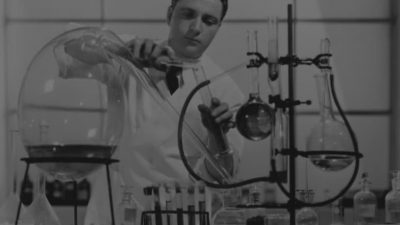Understanding gas chromatography
Gas chromatography (GC) is a powerful analytical technique that has revolutionized the field of chemical analysis. With its ability to separate and identify complex mixtures of volatile compounds, gas chromatography plays a crucial role in diverse industries, from pharmaceuticals and environmental monitoring to food and beverages.
Understanding GC Meaning:
Gas chromatography, often referred to as GC, is a technique used to separate and analyze volatile compounds in a sample. It relies on the principle of selective partitioning, where different compounds interact differently with a stationary phase and a gaseous mobile phase. By exploiting these subtle differences, gas chromatography allows for the identification and quantification of individual components within complex mixtures.
How Does Gas Chromatography Work?
At its core, gas chromatography works by passing a sample through a narrow column packed with a stationary phase. The sample is first vaporized and injected into the column through an injection port. As the sample traverses the column, different compounds interact with the stationary phase to varying degrees. This interaction causes the compounds to separate and travel through the column at different rates.
To aid in the separation process, an inert gas, such as helium or nitrogen, is used as the mobile phase. This gas carries the vaporized sample through the column, exerting pressure that influences the separation of compounds. As the components exit the column, they reach a detector, which measures their concentrations and generates a corresponding signal.
Gas chromatography, abbreviated as GC, is a vital analytical technique widely employed across various industries. By utilizing its unique partitioning principles, this versatile method allows for the separation and identification of volatile compounds in complex mixtures. As we explore specific applications and dive deeper into the inner workings of gas chromatography, we will gain a deeper appreciation for its indispensable role in fields such as environmental analysis, drug development, and quality control.
The Purpose of Gas Chromatography: An Essential Technique for Analyzing Chemical Mixtures
Gas chromatography (GC) is a powerful analytical technique widely used in various industries and research fields. With its ability to separate complex mixtures into individual components, gas chromatography plays a crucial role in understanding the composition and quality of substances.
Definition of Gas Chromatography:
Gas chromatography is an analytical technique used to separate the chemical components of a sample mixture and detect them to determine their presence or absence. It is based on the principles of chromatography in chemistry, specifically utilizing the movement of a mobile phase (an inert gas) and the interaction with a stationary phase (a thin layer of liquid) to achieve separation. This allows for the identification and quantification of individual compounds present in a mixture.
Application and Utility:
The application of gas chromatography spans across diverse industries, including product quality control, safety testing, and analytical research. In fields ranging from chemical refining to pharmaceuticals and food and beverage sampling, gas chromatography is an invaluable tool for analyzing compounds.
One of the notable utilities of gas chromatography lies in its effectiveness in analyzing organic molecules and permanent gases. These volatile compounds are commonly analyzed within a boiling point range of nC3 to nC44, although broader ranges like nC1 to nC100 (as seen in crude oil analysis) can also be handled. How does gc work can determine the presence, absence, and concentration of specific compounds, making it particularly useful in multiple scientific and industrial scenarios.
The gas chromatography process involves several key steps:
- Sample Preparation: Before analysis, samples are typically dissolved or diluted in a solvent and then injected into the inlet port. Essential oils may not require any dilution or preparation.
- Vaporization: The liquid sample is vaporized within the hot inlet, converting it into a gas.
- Separation: An inert gas, such as helium, is used to carry the sample through the analytical column. The various components of the sample interact differently with the stationary phase of the column, depending on their chemistry. This results in the separation of the components based on their unique characteristics.
- Detection: As the separated compounds elute from the column, they enter a detector, such as a mass spectrometer (MS). The detector identifies and separates the compounds by mass, aiding in their identification.
- Chromatogram: The gas chromatograph generates a graph known as a chromatogram. The chromatogram displays peaks, where the size of each peak corresponds to the amount of the respective component reaching the detector. The number of peaks indicates the presence of different compounds in the sample, while their positions on the chromatogram indicate the retention times of each compound.
How Does Gas Chromatography Work? Unlocking the Secrets of GC Analysis
Gas chromatography application is a highly effective analytical technique used to separate and analyze chemical mixtures. In this section, we will explore the inner workings of a gas chromatography instrument, the steps involved in gas chromatographic analysis, and uses of chromatography. Understanding these processes will shed light on how a gas chromatograph functions and how to interpret the data obtained.
Mobile Phase
The mobile phase in gas chromatography analysis refers to an inert gas, such as helium or nitrogen, that carries the vaporized sample through the system. It acts as a carrier, helping to move the sample through the column and aiding in the separation of compounds.
Sample Injector
The sample injector is a crucial component of the gas chromatography instrument. It is responsible for introducing the sample into the system. The sample, which is usually in liquid or gas form, is injected into the injector port and then vaporized before it enters the column. This step ensures that the sample is in a gaseous state for analysis.
Column
The column is the heart of the gas chromatography system. It consists of a long, narrow tube coated with a stationary phase, which interacts with the sample compounds. The stationary phase can be a liquid or a solid material. As the sample moves through the column, different compounds interact with the stationary phase at varying strengths, leading to their separation based on their chemical properties, such as polarity or molecular weight. The column length, diameter, and stationary phase all play a critical role in achieving optimal separation.
Detector
The detector in gas chromatography is responsible for detecting and quantifying the separated compounds as they exit the column. Various types of detectors are used, such as flame ionization detectors (FID), thermal conductivity detectors (TCD), or mass spectrometers (MS). Depending on the detector type, different compounds are detected based on their unique physical or chemical properties. The detector generates signals that correspond to the concentration of each compound, forming peaks on the chromatogram.
Data System
The data system in gas chromatography plays an essential role in collecting, analyzing, and interpreting the signals from the detector. Modern gas chromatography systems are typically equipped with sophisticated data acquisition and analysis software. The software allows for the visualization of chromatograms, quantification of compounds, and identification of peaks. It also provides essential tools for how to read a gas chromatograph, enabling precise analysis and interpretation of the results.
Gas Chromatographic Analysis
During a gas chromatographic analysis, the sample is injected into the system through the sample injector. The mobile phase, typically an inert gas, carries the sample vapor through the column. As the compounds traverse the column, they interact with the stationary phase, leading to their separation. Once separated, the compounds exit the column and are detected by the specific detector employed. The detector generates signals that are processed by the data system, ultimately producing a chromatogram.
The chromatogram obtained from gas chromatographic analysis provides valuable information. Each compound appears as a peak, with its retention time indicating the time it takes for that particular compound to elute from the column. The peak area or height represents the quantity or concentration of the compound in the sample. By comparing retention times and peak characteristics to known standards and utilizing complex data analysis techniques, scientists can identify and quantify the compounds present in the original sample.
How does a gas chromatograph work? Gas chromatography operates by utilizing a mobile phase, sample injector, column, detector, and data system. The process involves the separation of compounds based on their interaction with the stationary phase in the column.
Gas chromatography applications
You might find yourself wondering, what is gas chromatography used for? Gas chromatography is a widely used analytical technique that can separate, detect, and quantify chemical components of a sample mixture with high accuracy. A gas chromatographic system typically includes an autosampler, analytical column, detector, and chromatogram. But, what is a gas chromatograph and what does gas chromatography do?
Gas chromatography is a chemical analysis method that relies on volatile components in the compounds to separate and identify them in a mixture. This versatile method can work on gas, liquid, or solid samples to analyze and identify a wide range of compounds, from food components to contaminants in the environment.
Due to its speed, versatility, and accuracy, gas chromatography used for as a preferred method of analytical analysis in many industries. Gas chromatography offers numerous advantages, including fast speed of analysis, a wide range of sample options, and sensitive analysis. It also provides accurate and cost-efficient quantification of chemical compounds in a sample, making it an ideal method for quality control procedures.
There are multiple applications for gas chromatography, such as food analysis, environmental monitoring, drug testing, forensics, and manufacturing quality control. Gas chromatography is commonly used in the food industry for quality control and accurate quantification of compounds and contaminants in food such as carbohydrates, proteins, vitamins, pesticides, and trace elements. In environmental monitoring, gas chromatography is commonly used to detect contaminants in the air and identify potential hazards. Drug testing involves the analysis of bodily fluids using gas chromatography, and this method is commonly used in law enforcement to detect blood alcohol levels and banned substances. Gas chromatography is also used in forensic analysis to determine a person’s cause of death by identifying whether they were poisoned, intoxicated, or overdosed on a banned substance.
FAQ
What Is Gas Chromatography?
Gas chromatography is a technique used to separate and analyze volatile compounds in a sample. It is based on the principle of partitioning compounds between a stationary phase and a mobile phase.
How Does Gas Chromatography (GC) Work?
Gas chromatography works by injecting a sample into a heated inlet where it is vaporized. The vaporized sample is then carried by an inert gas through a column packed with a stationary phase. As the sample interacts with the stationary phase, different compounds separate based on their affinity to the stationary phase.
What components are used in gas chromatography?
Key components of a gas chromatograph include an injection port, a column, a detector, and a data acquisition system. The injection port vaporizes the sample, the column separates the compounds, the detector detects the separated compounds, and the data acquisition system records the data.
What is gas chromatography used for?
Gas chromatography is used for a wide range of applications, including chemical analysis, quality control, drug testing, environmental analysis, food and beverage analysis, and forensic analysis.
What are the advantages of gas chromatography?
Gas chromatography definition states that it offers numerous advantages such as high sensitivity, high resolution, fast analysis times, and the ability to analyze complex mixtures. It also allows for quantitative analysis and can handle a wide range of sample sizes.
What are the scientific and industrial applications of gas chromatography?
What is chromatography in chemistry? Gas chromatography finds applications in various scientific and industrial fields. Some examples include analyzing volatile compounds in environmental samples, monitoring pesticide residues in food, characterizing flavors and fragrances, and analyzing impurities in pharmaceuticals.
What limitations exist for gas chromatography?
Gas chromatography has limitations such as the inability to analyze non-volatile compounds, difficulty in separating compounds with similar properties, and the requirement for volatile and thermally stable analytes. Additionally, it may require complex sample preparation techniques for complex matrices.





